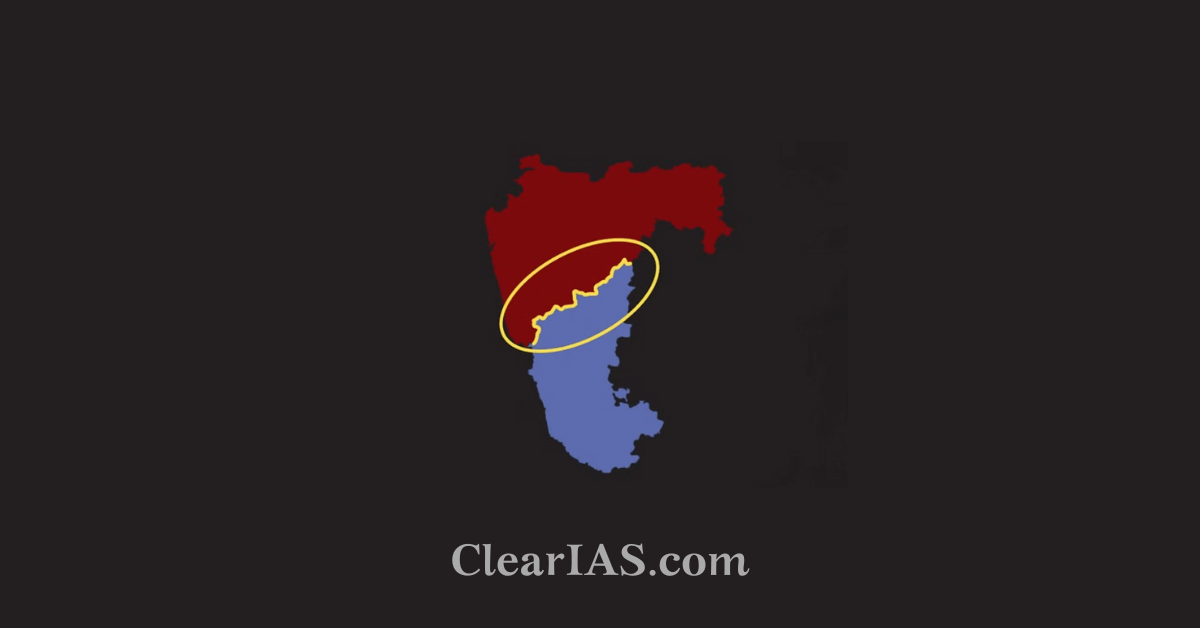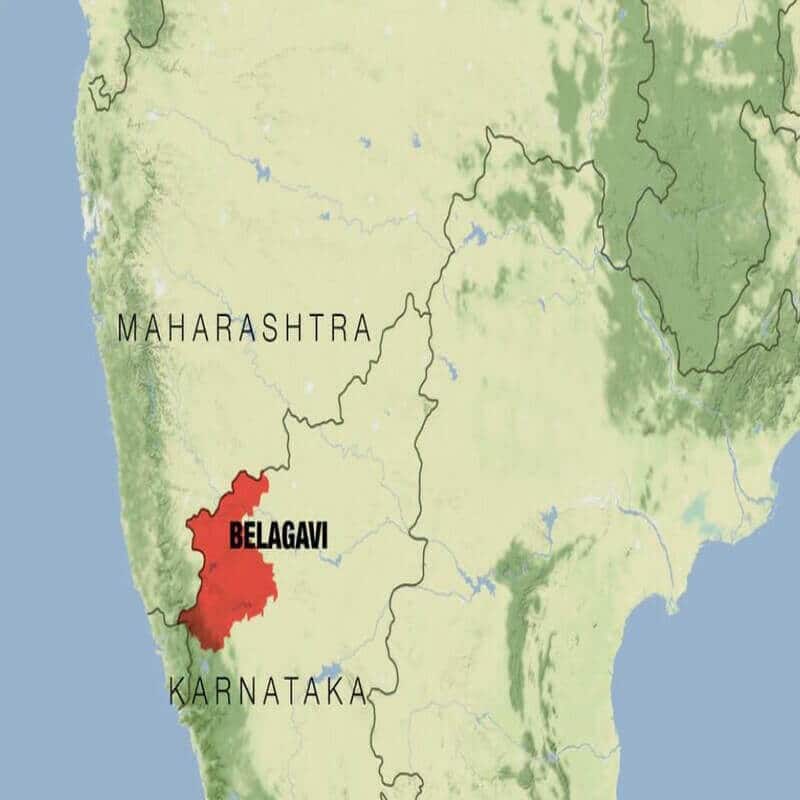
The dispute along the Maharashtra-Karnataka border is decades old. The issue keeps popping up every once in a while since it is yet unresolved. Read here to know the history, current status, and details of the dispute.
The decades-old dispute between Maharashtra and Karnataka over the Belagavi or as Maharashtra calls it the Belgaum district, is mentioned in the headlines now and then.
Belgaum or Belagavi is currently part of Karnataka but is claimed by Maharashtra.
The Maharashtra-Karnataka boundary dispute has its origins in the reorganization of states along linguistic lines via the State Reorganisation Act, of 1956.
The disputed area has both Marathi and Kannada-speaking populations hence linguistic bifurcation is difficult in this case.
History of Maharashtra-Karnataka border dispute

1956: Ever since the State Reorganisation Act was enacted by the Parliament in 1956, Maharashtra and Karnataka have argued about the inclusion of various cities and villages along the state border.
- The conclusions of the Justice Fazal Ali Commission, which was established in 1953 and delivered its report two years later, served as the foundation for the Act.
When Mysore state, later known as Karnataka, was created on November 1, 1956, tensions between it and the neighboring Bombay state, afterward known as Maharashtra, arose.
- Maharashtra believed that the Belagavi district in northwest Karnataka should be a part of the state.
- This belief resulted in a decade-long violent agitation and the creation of the Maharashtra Ekikaran Samithi (MES), which still rules over some areas of the district and the city bearing its name.
1957: Maharashtra demanded readjustment of its border with Karnataka by invoking Section 21 (2) (b) of the Act and submitted a memorandum to the Ministry of Home Affairs stating its objection to Marathi- speaking areas being added to Karnataka.
- It claimed a region of 2,806 square miles that included 814 villages, three urban centers (Belagavi, Karwar, and Nippani), and a total of around 6.7 lakh people. All of these places were formerly a part of the Mumbai Presidency before India’s independence.
- The villages are dispersed across the Maharashtra-bordering districts of Belagavi and Uttar Kannada in north-western Karnataka, as well as Bidar and Gulbarga in north-eastern Karnataka.
Maharashtra’s claim
- The pro-Marathi organizations assert that Belagavi is a predominantly Marathi-speaking region, with several areas speaking just Marathi.
- It asserts that the area ought to be a part of Maharashtra rather than the Kannada-speaking state of Karnataka.
- Its rationale counted the number of languages spoken in each village and was based on the idea that villages serve as the basic unit of measurement.
- Maharashtra additionally draws attention to the historical fact that certain Marathi-speaking regions still maintain their tax records in Marathi.
Karnataka’s stand
- According to Karnataka, the boundary determination made by the States Reorganisation Act is definitive.
- The State’s border was neither ambiguous nor adjustable hence they contend that such a demand should not be granted because it would resurrect border disputes that the Act did not address.
Response of union government to Maharashtra-Karnataka border dispute
1966: The Union government set up a commission under retired Supreme Court judge Justice Meharchand Mahajan on October 25, 1966. S Nijalingappa was the Karnataka Chief Minister then and VP Nayak was his Maharashtra counterpart.
- The report was expected to be a binding document for both states and put an end to the dispute.
- The commission submitted its report in August 1967, where it recommended merging 264 towns and villages of Karnataka (including Nippani, Nandgad, and Khanapur) with Maharashtra, and 247 villages of Maharashtra (including South Solapur and Akkalkot) with Karnataka.
1970: The report was tabled in Parliament but not taken for discussion- hence without implementation of the recommendations, demands of Marathi-speaking regions to be part of Maharashtra and Kannada-speaking regions to be part of Karnataka continued to grow.
The commission’s report was outrightly rejected by Maharashtra. While successive governments in Maharashtra maintained that the commission had not adequately addressed its concerns, Karnataka saw the commission ruling in its favor.
Current status of the dispute
Both Karnataka and Maharashtra believe that the complex problem cannot be solved politically and must be settled through the judicial system.
2004: The Maharashtra government filed a petition in the Supreme Court, staking claim over Marathi-speaking villages in Karnataka, which contested the claim.
- Meanwhile, Karnataka changed the name of Belgaum to Belagavi and made it the second capital of the state.
Karnataka has cited Article 3 of the Constitution to argue that the Supreme Court does not have the jurisdiction to decide the borders of states, and only Parliament has the power to do so.
Maharashtra has referred to Article 131 of the Constitution, which says that the Supreme Court has jurisdiction in cases related to disputes between the Union government and states.
2010: The Centre in its affidavit had stated that the transfer of certain areas to then Mysore (now Karnataka) was neither arbitrary nor wrong.
- It also underlined that both Parliament and the Union Government had considered all relevant factors while considering the State Reorganisation Bill, of 1956, and the Bombay Reorganisation Bill, of 1960.
Both Maharashtra and Karnataka have used the border dispute to stoke regional sentiments during elections.
Conclusion
In 2006, the Supreme Court held that the issue should be resolved through mutual negotiation and that linguistic criterion should not be considered as it may create more practical problems.
The case is still being heard by the Supreme Court.
Historically, bilingualism has been an essential element of the culture of the area. Both languages have soaked in words from each other which are now part of daily lingo.
The dispute has become more political now than linguistic or territorial because appealing to language chauvinism acquires an instrumentalist-political demand. It is an emotive issue now and political parties in both states have also used the dispute for electoral benefits.
-Article written by Swathi Satish






Leave a Reply